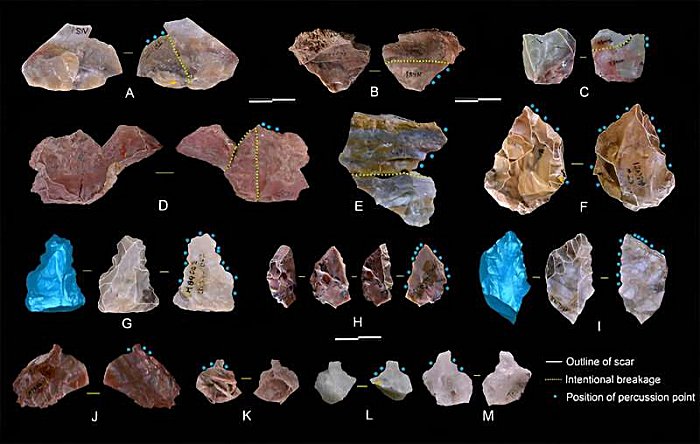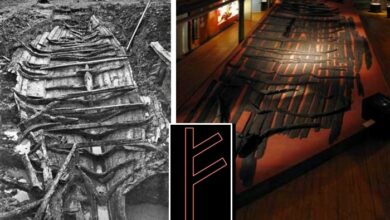New Tool-Making Timeline For East Asian Hominins – Study

Conny Waters – AncientPages.com – A global team of researchers, spearheaded by Chinese scientists, has discovered that East Asian hominins were already using sophisticated stone tool technology around 1.1 million years ago.
Retouched tool patterns in the CJW assemblage. (A–E) Slender flakes are intentionally broken and used as blanks for retouching tipped tools. (G–I) Unifacially retouched points. (J–M) Borers. Credit: IVPP
Undoubtedly, this revelation indicates that such advanced usage occurred significantly earlier than what was previously believed.
The study was conducted by a joint team led by Prof. PEI Shuwen from the Institute of Vertebrate Paleontology and Paleoanthropology (IVPP) of the Chinese Academy of Sciences and Prof. Ignacio de la Torre from the Institute of History the Spanish National Research Council (CSIC).
It was an in-depth analysis of stone tool technology at the Cenjiawan site in Nihewan basin, northern China.
Technical analysis and high-precision 3D scanning of stone tools were used at the site, and the research team revealed how hominins at the site made and used stone tools.
The results uncovered that this site holds the earliest evidence of prepared core technology in Eurasia. The core technology that was developed is a crucial component of the Acheulean industry. It was creation of stone tools, marked by unique oval and pear-shaped “hand axes”.
It is linked with Homo erectus and descendant species like Homo heidelbergensis that existed during the Middle Pleistocene.
This was the first standardized toolmaking tradition of Homo erectus and early Homo sapiens. Acheulean tools were produced during the Lower Palaeolithic era across Africa and much of West Asia, South Asia, East Asia and Europe, and are usually found with Homo erectus remains.
The researchers are of the opinion that the hominins found at the Cenjiawan site possessed cognitive and technical abilities similar to those of Acheulean hominins.
According to Pei Shuwen from IVPP, who is one of the co-authors of this study, this research holds immense importance in understanding how early Paleolithic technology evolved and innovated over time.
Pei highlights the immense potential of the Nihewan basin as a research hub for building models of human evolution and behavior in East Asia over millions of years.
The findings of this research provide insights into the early dispersals and adaptions of hominins in Eurasia, and it were shared with the world through an article published in the “Proceedings of the National Academy of Sciences of the United States of America (PNAS).”
Written by Conny Waters – AncientPages.com Staff Writer





